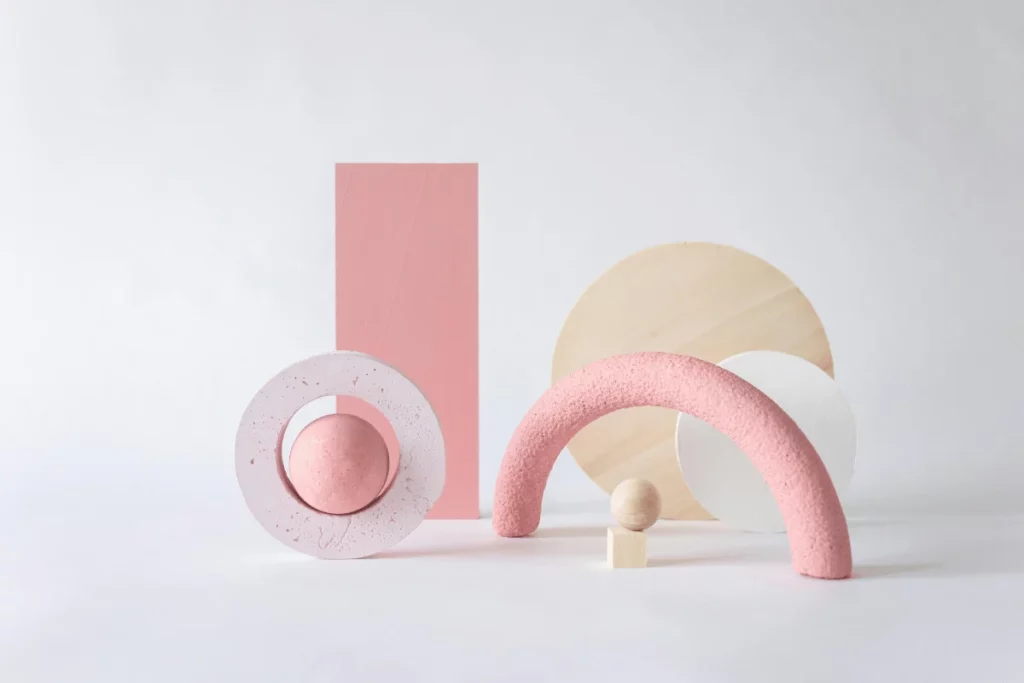Nobody wants to launch flop features, confusing interfaces, or boring rebrands. However, all these happen when user voices are lost in the product design and development process.
The good news? Testing, interviewing, and observing users early can help you better understand their needs. Qualitative research is key. It uncovers the why behind user behavior and reveals problems before they become costly mistakes.
To see the power of research in action, take a look at some qualitative research examples. In this article, we’ll show you not just examples but actionable ways to:
- Know your users better
- Solve UX challenges
- Refine your products
Let’s explore some examples of the best qualitative research methods and what they reveal.

TL;DR – 7 Qualitative Research Examples
The beauty of doing qualitative observations? You can take different paths depending on what you need to learn. This post’s examples of qualitative research methods will show you multiple approaches:
- Usability testing: Users ignore a key feature because a button blends into the background.
- In-depth interviews: Developers abandon an API due to confusing docs and cryptic errors.
- Concept testing: A banking app tests a voice assistant that users find “creepy.”
- Card sorting: A B2B software company discovers users have different expectations from the menu’s structure.
- Focus groups: A rebranded productivity app seems “too playful” for professionals.
- Diary studies: A project management tool finds teams using workarounds for task dependencies.
- Ethnographic research: A CRM company realizes that support agents waste hours manually copying customer data.
Each of these insights came from qualitative research. However, raw qualitative data cannot reach its full potential without the right analysis tools.
Marvin helps you organize, tag, and extract insights faster to turn them into real impact. Start your free account today and enjoy all the automation available in our end-to-end UX research repository.

What is Qualitative Research?
Qualitative research is any non-numerical data you collect to understand user needs, pain points, and decision-making. It’s called qualitative because it goes deep into the research subject, looking for:
- Detailed answers and opinions
- Behavioral observations
- Emotions, whether stated or interpreted
With this type of research, you use the voice of customer frameworks to listen, observe, and analyze behaviors. You might also run interviews, usability tests, or field studies.
The goal? To uncover insights that explain the real story behind user actions. What causes users to drop off at checkout? Is this feature frustrating?
For any question you can think of, qualitative research helps find the why.

Benefits of Qualitative Research
You can’t meet user needs if you don’t know what those are. Qualitative research helps pinpoint those needs, exploring the human side of product design.
Here’s what else it helps with:
- Understanding user actions: You learn what frustrates users, keeps them engaged, or motivates actions.
- Exploring real-world context: Users’ environment, habits, and emotions influence their product use. Research helps you see the bigger picture.
- Identifying hidden problems: By observing and listening, you catch issues users can’t articulate (confusing navigation, frustrating workflows, etc.)
- Improving product decisions: Taking decisions based on real insights leads to fewer redesigns and better user adoption.
- Building user empathy: When you hear your users’ struggles in their own words, you design with real people in mind. Your products will feel more intuitive and human-centered.

When to Choose Qualitative Research Methods
Qualitative user research methods complement the quantitative ones. They’re the best choice whenever your goal is depth over numbers, and you want to:
- Explore new problems: If you don’t know what’s broken, start with qualitative research. It helps uncover pain points before you invest in solutions.
- Add depth to analytics: When numbers leave you with more questions than answers, talking to users can fill in the gaps.
- Test early concepts: Before you build, qualitative research helps refine ideas so you don’t waste time on features no one wants.
- Improve user experience: If something feels off but you can’t pinpoint why, qualitative methods reveal what’s frustrating users.
- Design for emotion: Even the most functional products evoke feelings. Qualitative research helps you understand users’ emotional responses so you can design feel-good experiences.

Types of Qualitative Research Methods
Some methods involve sitting down with users and hearing their unfiltered thoughts. Others make you a silent observer of their worlds, watching how they interact with products in real life.
Depending on what you need to learn, you can take different approaches:
1. Usability Testing
If you can do only one thing, do this: Watch real users interact with your product.
Usability testing is the best way to spot design flaws early. It will tell you where users get stuck, abandon tasks, or misuse features. Plus, it can uncover clues about why friction occurs.
2. In-Depth Interviews
Interviews help you gain deep insights into user behavior. They can show you why teams resist switching tools or what developers hate about your API.
In this qualitative interview guide, you’ll see some examples of qualitative research questions you can use. But keep in mind that users might not always tell you what upsets them. Sometimes, they don’t even understand it themselves.
So, to make these one-on-one conversations revealing, try to:
- Ask open-ended questions.
- Let them explain their needs, frustrations, and decision-making processes.
Tip: Pair interviews with usability testing when possible to match what users say with what they do. Also, an AI assistant will help you avoid missing patterns or actionable feedback from your research.
Marvin’s automated tagging and analysis can quickly turn raw conversations into clear, actionable insights. Book a free demo of Marvin to see how our AI research assistant makes sense of UX data.
3. Concept Testing
When you need to validate ideas before committing resources, concept testing is the way to go.
You can use it for early feedback on wireframes, prototypes, or product ideas. But provide enough context so users won’t struggle to imagine the unfinished concept.

4. Card Sorting
Our brain constantly tries to organize content into categories that make sense to it. That’s why intuitive navigation and structure are essential in UX design.
Card sorting provides feedback on designing the best menus, dashboards, or an entire site’s architecture.
Use it to test your designs anywhere users have to find things fast. Remember that different users group things differently, so test with multiple people.
5. Focus Groups
Want to understand attitudes toward a product, branding, or messaging? A moderated discussion with 5-10 users might help. Have participants share opinions and see how they react to each other’s thoughts. You’ll get diverse perspectives quickly.
One thing to consider is that the loudest person in the group can sway everyone else. Want to avoid groupthink and ensure no single voice dominates the session?
Bring in a skilled moderator who can encourage balanced participation and:
- Call on quieter members
- Ask for individual thoughts before the open discussion
- Have participants write responses before sharing
6. Diary Studies
With diary studies, users log their experiences over days or weeks. They capture real-world behaviors, frustrations, and delights over time.
If you want insights into long-term interactions, consider this qualitative research method. But be prepared for the challenge of keeping participants engaged. Making the log-in easy and rewarding should help.
7. Ethnographic Research
When you observe users in their natural environment, you see how they actually work. And that’s what ethnographic research is all about.
Yes, this method is time-consuming. Users may also act differently if they know they’re being watched. But if you can be as unintrusive as possible, you might spot insights no one thinks to mention.
Consider ethnographic research when you need a deep understanding of user behavior in context. For instance, when you want to see how teams collaborate or how a product fits into daily workflows.

Best Examples of Qualitative Research
Ready to cement all this information?
Here’s a solid list of qualitative research examples, one for each method, all tied to product design and development:
1. Usability Testing
“Why aren’t users clicking the button?”
A SaaS company sees low engagement with a feature. During a moderated usability test, researchers observe users hesitating, scanning the page, and moving their cursor around. They’re not clicking the button. When asked, users say things like:
“I didn’t even notice there was a button here. It kind of disappears into the page.”
“I thought this was just a label, not something I could click.”
“I expected to find this feature in the sidebar, not as a button.”
A quick design update boosts clicks by 40 percent.
2. In-Depth Interviews
“Why do developers hate our API?”
Engineers who abandoned an API say the documentation is confusing and error messages are cryptic:
“The API docs assume I already know how your system works. I need more examples.”
“The error messages don’t tell me what’s wrong — just that something broke.”
“I spent more time searching Stack Overflow than reading your docs.”
The company rewrites the docs, adds real-world examples, and improves adoption.
3. Concept Testing
“Should we build this feature?”
A mobile banking app tests a voice assistant prototype. Users find it creepy:
“Talking to my bank out loud in public? No thanks.”
“I don’t trust a voice assistant to understand complex banking tasks.”
“I’d rather just type. I don’t want to repeat myself five times.”
The team pivots to improving chat-based support instead, thus saving months of wasted development.

4. Card Sorting
“Where do users expect features to be?”
A B2B software company runs a card sort to reorganize its navigation. Users share what they think:
“Reports feel like they belong with analytics, not buried under settings.”
“I grouped these together because they help me track performance.”
“I assumed this section was for personal settings, not company-wide reports.”
The team adjusts, reducing support tickets.
5. Focus Groups
“Does our rebrand make sense?”
A productivity app tests a new logo in focus groups. Users say it looks “too playful” for a business tool.
“This looks like a kids’ app, not a serious productivity tool.”
“I like the colors, but the font makes it feel less professional.”
“The old logo felt more trustworthy. This one is too trendy.”
The team refines the design, keeping it fresh but professional.
6. Diary Studies
“How do teams actually work?”
A project management tool runs a two-week diary study. Teams create workarounds because task dependencies don’t fit their workflow.
“I have to create fake tasks just to link dependencies correctly.”
“This system assumes a strict process, but our team works more flexibly.”
“We spend more time adjusting tasks than actually managing the project.”
Based on these insights, The company introduces customizable dependency rules and bulk-editing options to reduce friction and improve retention.
7. Ethnographic Research
“What’s slowing down our users?”
A CRM company observes support teams using their platform in real-time. They expect seamless workflows but, instead, notice agents manually copying and pasting customer details between fields. When asked, agents say:
“I copy and paste customer names between fields all day. It’s a time suck.”
“If the system could pull this data automatically, I’d save hours each week.”
“It feels like the software wasn’t built for how we actually work.”
Seeing the inefficiency firsthand, the company introduces an autofill system. They reduce manual entry and improve agent productivity.
All these examples show how versatile qualitative research is. They also make you think about the importance of staying open to what the data reveals. If you’d like to dive even deeper into this fascinating type of research, check out the following resources:
- Qualitative research in UX (Why it matters)
- How to qualify quantitative data
- Qualitative research codebook (How to code data + examples)

Frequently Asked Questions (FAQs)
Before collecting your qualitative research data, consider the following aspects:
What Tools Are Commonly Used for Qualitative Data Analysis?
For qualitative data analysis, you need tools to organize, code, and make sense of unstructured data. Marvin, our AI-powered research platform, can help you conduct and analyze various qualitative research projects.
Tools like Miro are perfect for affinity mapping and clustering your qualitative data. However, even a Google Sheet or basic Excel file can help with manual coding and organizing responses.
Can Qualitative Research Be Used for Predictive Analysis?
Yes, but not alone. Qualitative research helps identify patterns, behaviors, and motivations that can inform predictive models. It reveals why users act a certain way, which helps refine quantitative forecasting.
Combined with analytics, qualitative research can improve predictions. It adds human context to raw data, making models more accurate and actionable.
What Are Some Common Mistakes in Qualitative Research?
Good research means digging deeper, staying objective, and always questioning assumptions. Missteps can lead to biased insights, misleading conclusions, or wasted effort.
Watch out for these common mistakes:
- Asking leading questions that nudge users toward a certain answer.
- Relying on what users say, not what they do.
- Ignoring context or not observing users in real situations.
- Overgeneralizing from small samples and not validating with triangulation in qualitative research.

Conclusion
Qualitative research helps you see users as real people, not just data points. It brings clarity to your design decisions.
The key is choosing the right method for the job:
- Testing is your best bet for quick usability insights.
- Interviews work wonders for deep user perspectives.
- Combining multiple methods helps you tackle more complex problems.
Ready to turn your qualitative market research examples into real product improvements? Start your free Marvin account today.
Our end-to-end research repository was made for qualitative UX research. Use it to benefit from AI workflows that quickly collect, analyze, and make sense of user feedback.
Bonus Resource: Want to see how top teams are managing research? Download our latest State of Research Repositories Report for key insights on organizing and scaling qualitative research.

